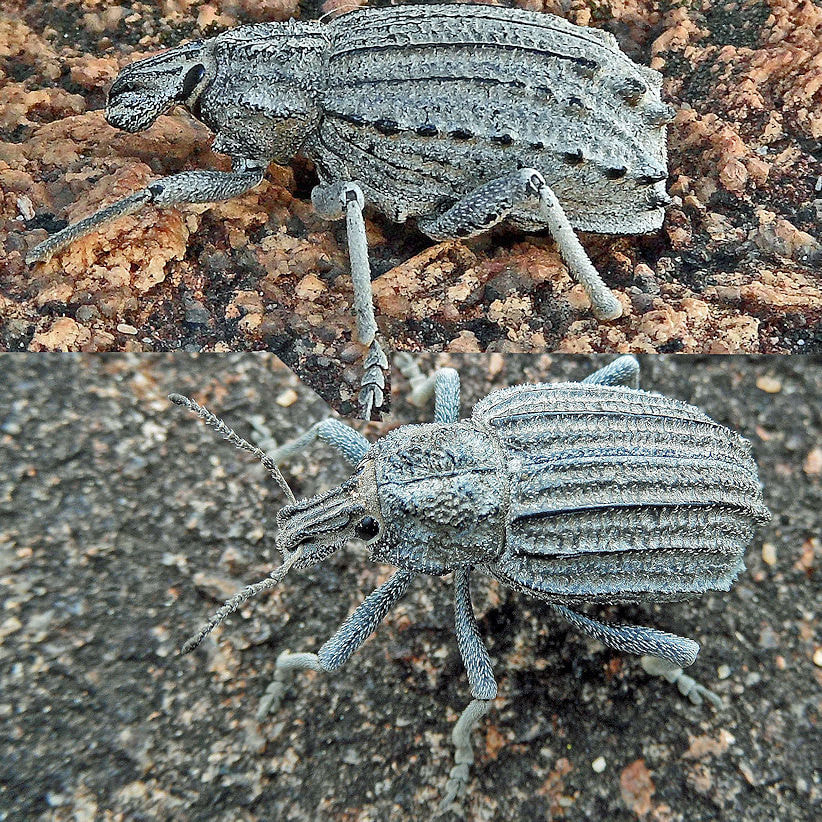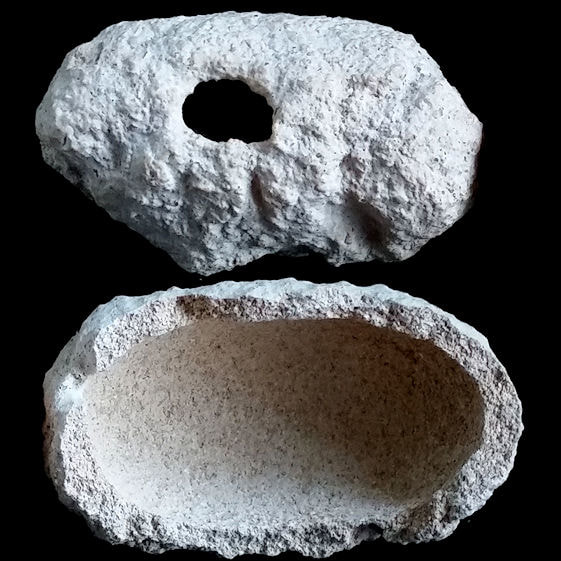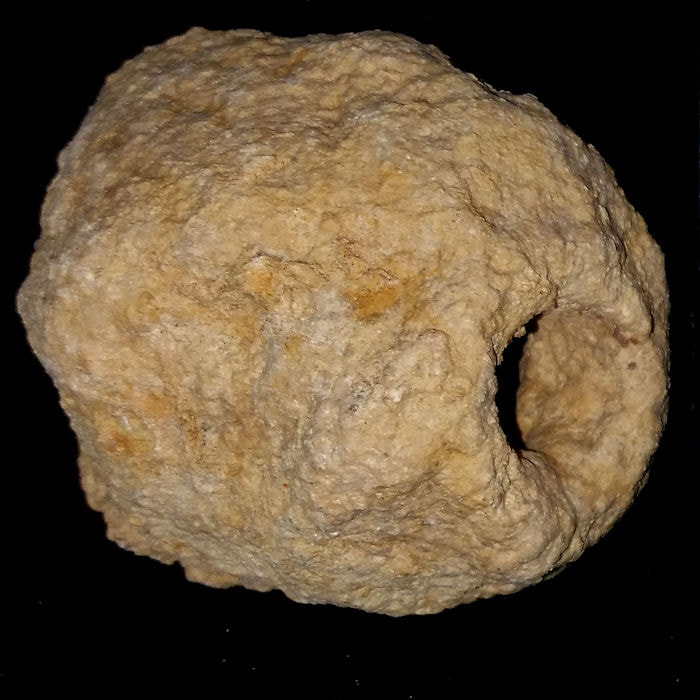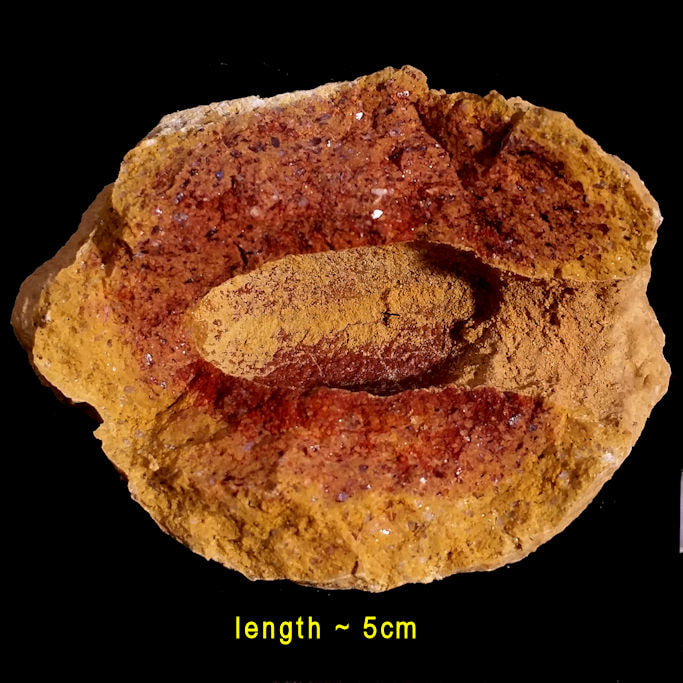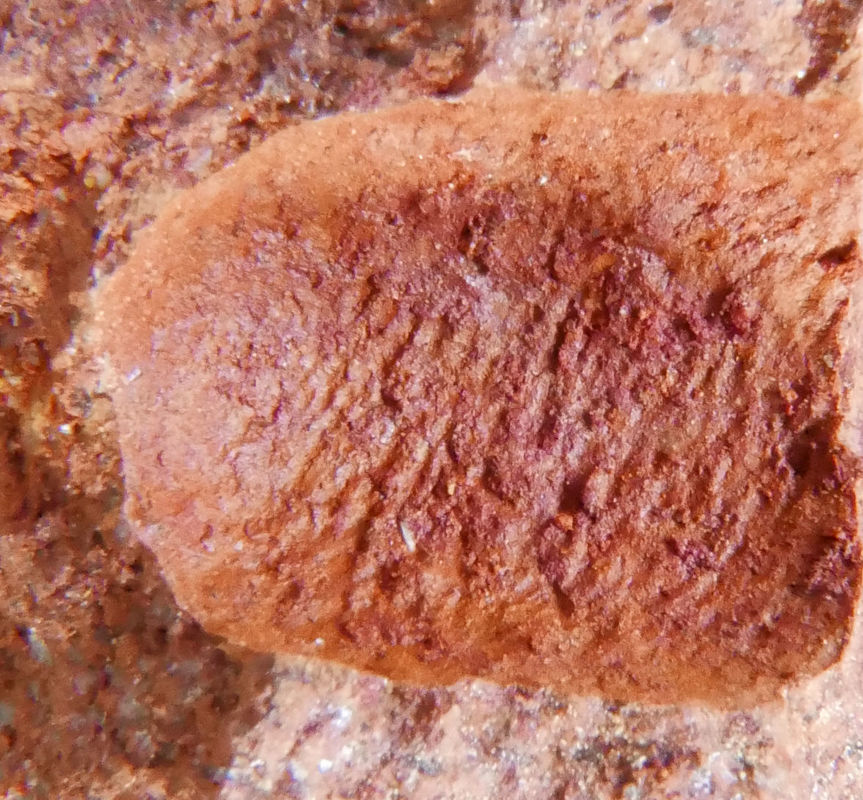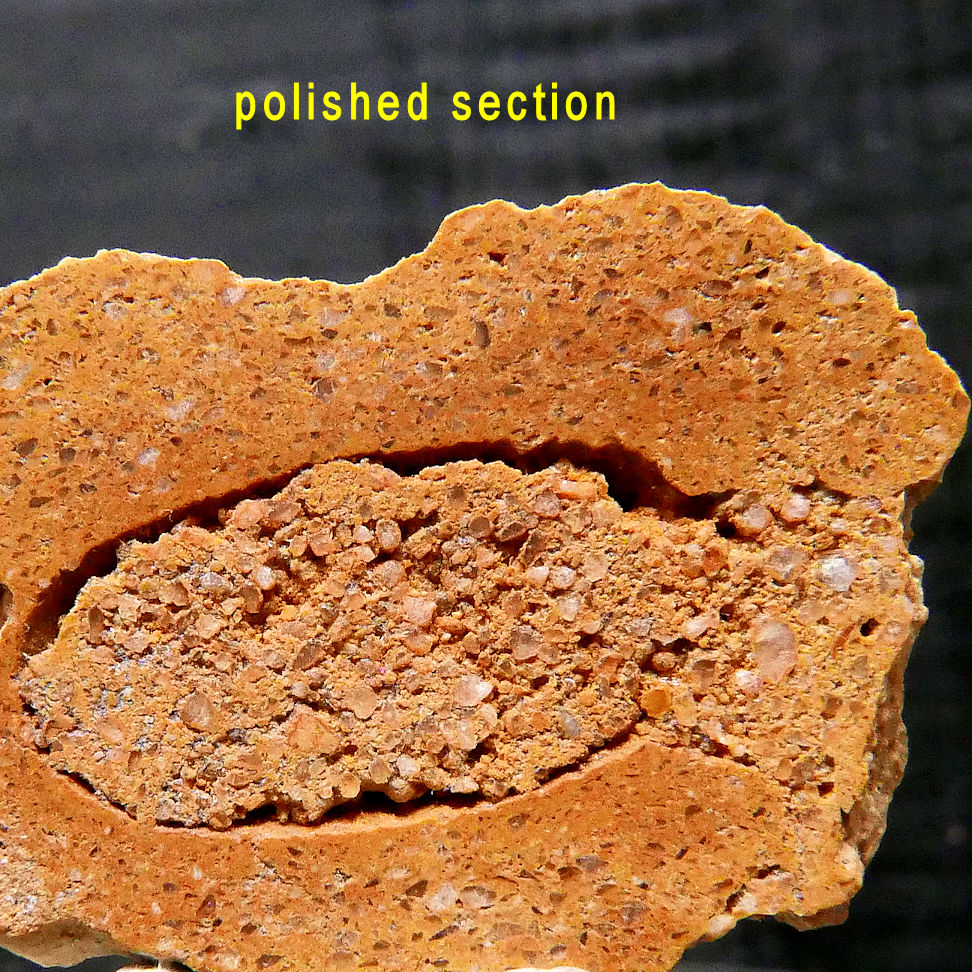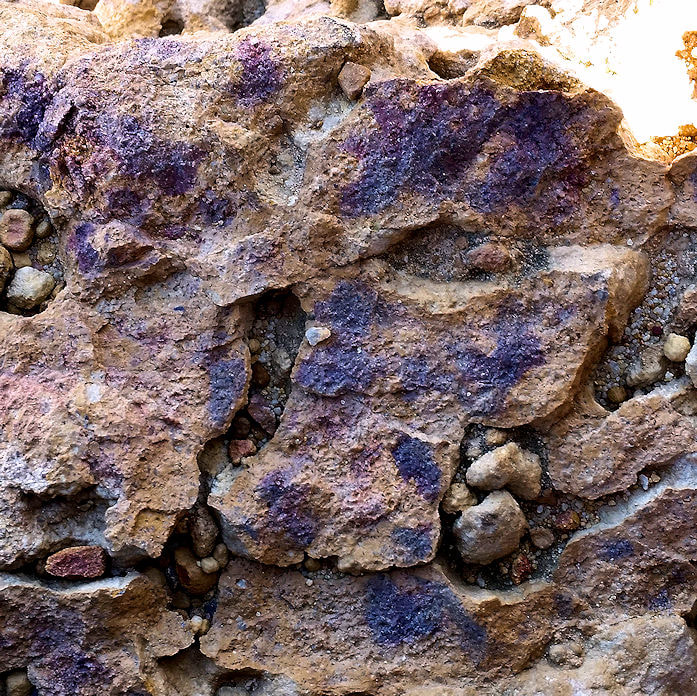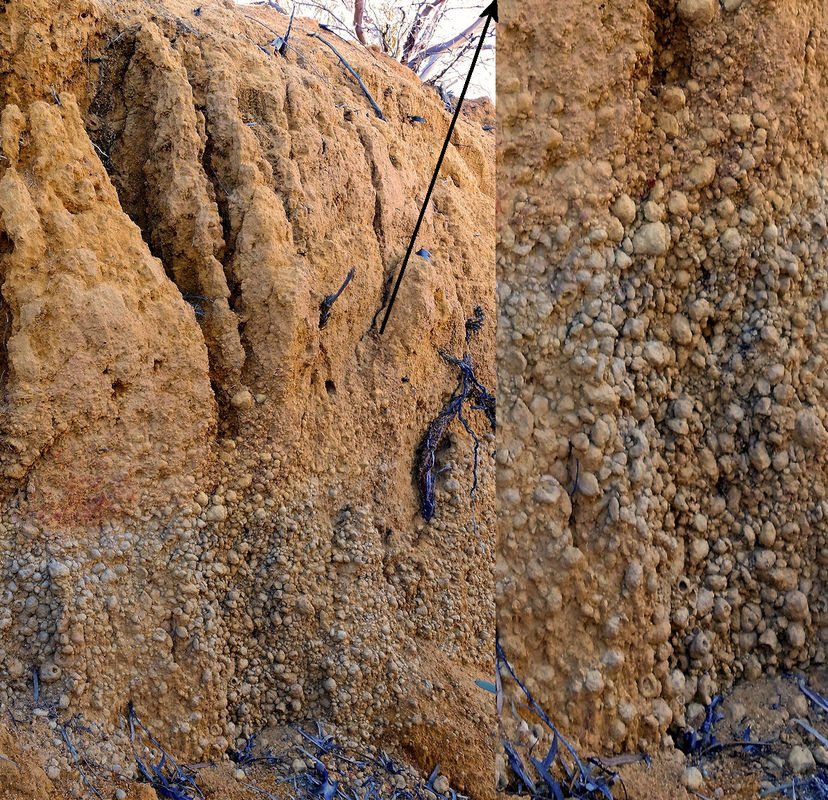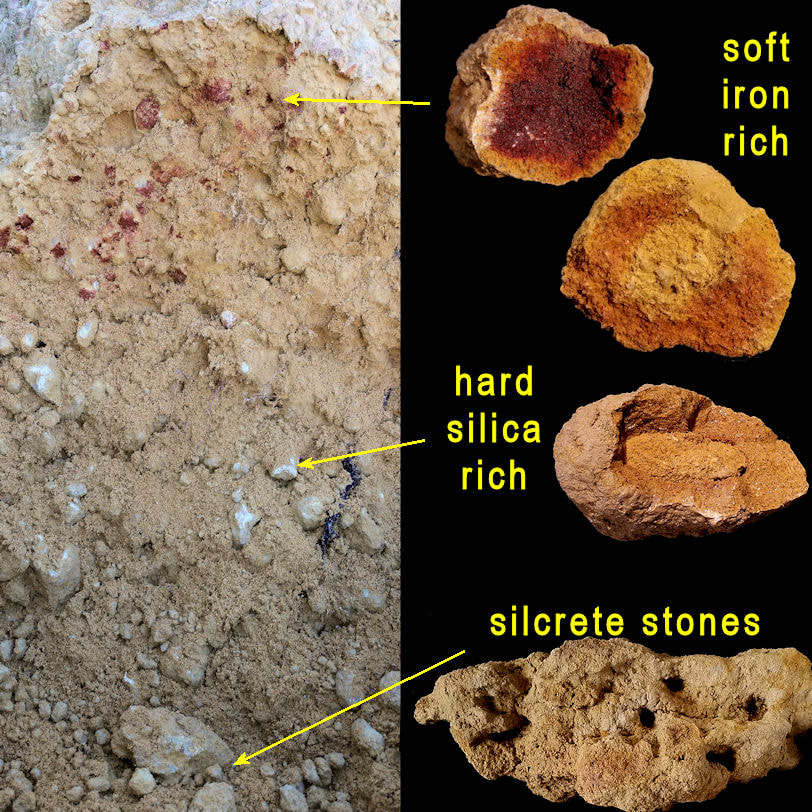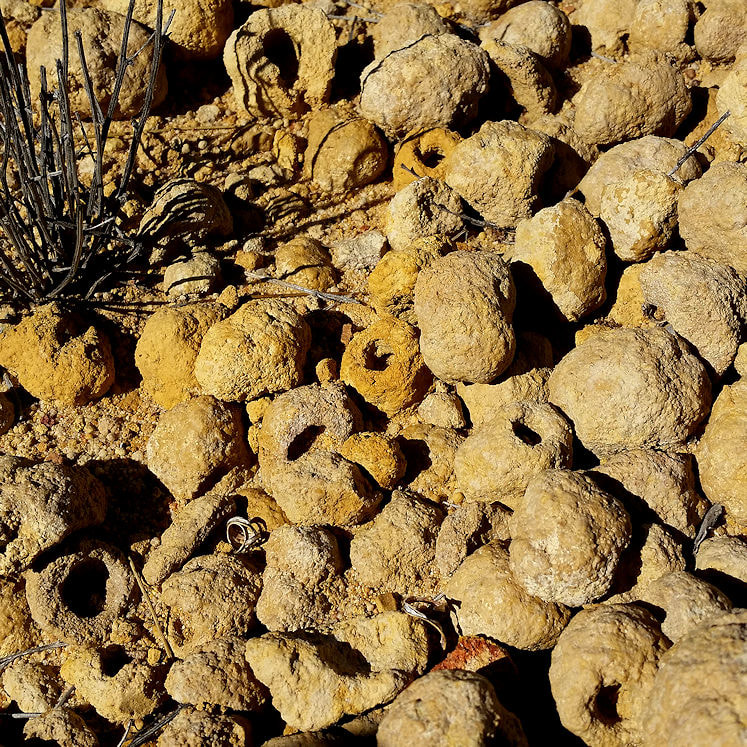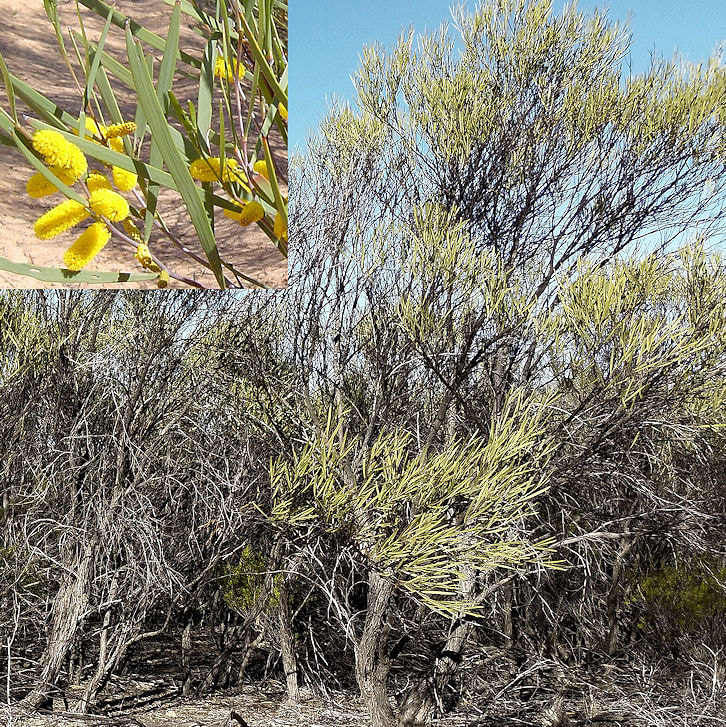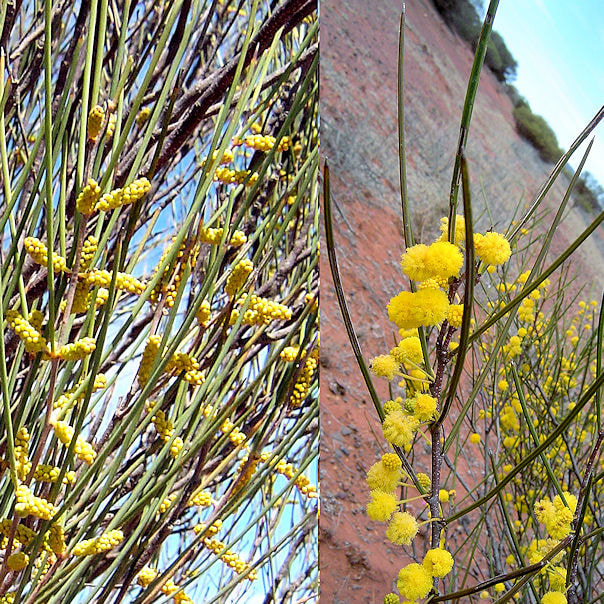
Candy Block is a little known outlier of Dryandra Woodland on the Narrogin-Wandering Road near the turnoff to Cuballing. It is a great place to visit in the growing season to see some great flowers and interesting scenery.
The whole area has infertile soils underlain by ancient (2.8 billion years!) granitic and dolerite rocks, which determine the pattern of ridges, waterways. Compare this with much of the northern hemisphere, which has fertile soil from mountains that were scoured by glaciers only 10,000 years ago, and sediments from great rivers.
Candy Block has more dramatic slopes and breakaways and gullies and more variable soils than the main block, that reflect variations in the underlying rock. In particular more resistant laterites on NW-SE dolerite dykes have remained while surrounding soils eroded to form dramatic mesas with steep gullies.
Thicker red lines show good driving tracks to enjoy the reserve. Please enter by the northern entrance as cars may slide and collide with oncoming vehicles while getting a run-up to tackle a blind steep loose gravel ascent on the southern entrance.
Note that the narrow red lines are fire access tracks that may be rough, boggy or blocked by fallen trees.
The slideshow below gives a snapshot of this remarkable reserve.
Click here for blog on the lovely stages of development of Petrophile circinata and Isopogon villosa
Spring orchids are less common. Cowslip orchids are widespread, greenhood, jug, snail greenhood, donkey, blue china and fringed mantis orchids occur in places in sheoak woodland.
Sections of Candy Block are baited monthly to control foxes and feral cats. If you discover a “sausage” style bait on the ground please do not touch, remove or disturb it. Pets are not permitted and all pets are likely to be highly susceptible if taking a bait.


